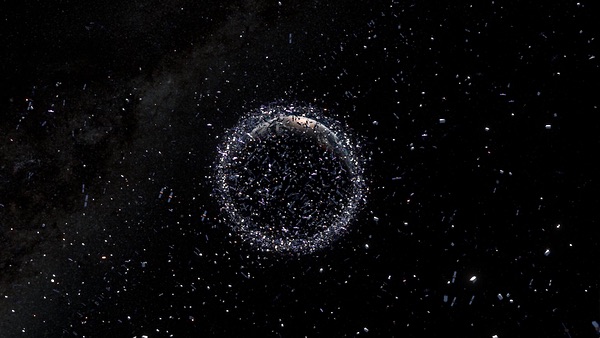Orbital use fees won’t solve the space debris problemby Ruth Stilwell
|
| The principal sources of orbital debris are satellite explosions and collisions, including intentional destruction. |
The problem of space debris and congestion is not one of operational satellites, but rather one created by non-maneuverable debris. Space situational awareness and conjunction alerting systems seek to prevent collisions by maneuverable objects, further reducing the risk they impose. It is not the operational satellite, but the behaviors associated with putting the satellite in orbit and removing it at end of life, that increases the debris risk.
In developing appropriate mitigation strategies for orbital debris, it is imperative to consider the primary causes of orbital debris and develop approaches that address those causes. The principal sources of orbital debris are satellite explosions and collisions, including intentional destruction. High-risk orbital behaviors are well known: old launch vehicle upper stages left in orbit with residual propellants and high-pressure fluids, defunct satellites that are not deorbited, and anti-satellite weapons testing. These are the primary contributors to orbital debris and should be the focus of debris mitigation strategies.
State, commercial, and non-government users of space have a shared interest in creating the long-term sustainability of space operations, and global progress requires international agreement. Proposers for an orbital use tax mention that it would need to be globally harmonized but fail to recognize the difficulty in reaching such an agreement—if such an agreement is even possible. The recent collapse of the OPEC pact and the subsequent oil price war illustrates the fragility of international economic collaboration. By contrast, international agreements on standards and regulation for international operators, as we see in the maritime and aviation industries, tend to endure. It is important to recognize that diplomatic resources are limited and efforts to reach international agreement should focus on areas that can provide the most benefit and have the greatest chance for success.
| An orbital use tax would put an additional financial penalty on the user that is able to prevent the collision risk but do nothing to change the behavior that created the collision risk. |
For the long-term sustainability of space, the answer is not to make space more expensive to use, but rather to ask the users, both civilian and military, to be responsible to the goal of sustainable use. This requires a focus in three critical areas: collision avoidance, limiting debris-generating behaviors, and debris removal. As we ask the space community to be more responsible, it is important to define what that means. As illustrated by recent anti-satellite missile tests, the community can be alarmed, but we are functionally unable to hold each other to standards of behavior if those standards do not exist. Efforts at international agreement should be focused on reaching agreement in these areas if we are to have a sustainable and accountable orbital domain.
The space debris problem is complex and will not be solved by targeting one section of the industry. It is important to look at primary contributors to the problem. Leaving non-maneuverable objects in orbit creates an unresolvable collision risk as illustrated in January, when two intact satellites that had been in orbit for decades came within meters of colliding (see “Will we hit the snooze button on an orbital debris wakeup call?”, The Space Review, February 17, 2020). By contrast, days before the potential collision, a damaged DirecTV satellite at risk of exploding was maneuvered to a graveyard orbit where it did not pose a debris hazard to other operators. An orbital use tax would put an additional financial penalty on the user that is able to prevent the collision risk but do nothing to change the behavior that created the collision risk. The orbital fees not only don’t solve the problem but, by and large, they are asking the commercial sector to pay for the pollution that was created by legacy users who were largely governments.
While economic incentives can be an effective tool to affect behavior, it is important that there is a clear connection between the economic lever and the behavior that it seeks to influence.
Note: we are temporarily moderating all comments submitted to deal with a surge in spam.
